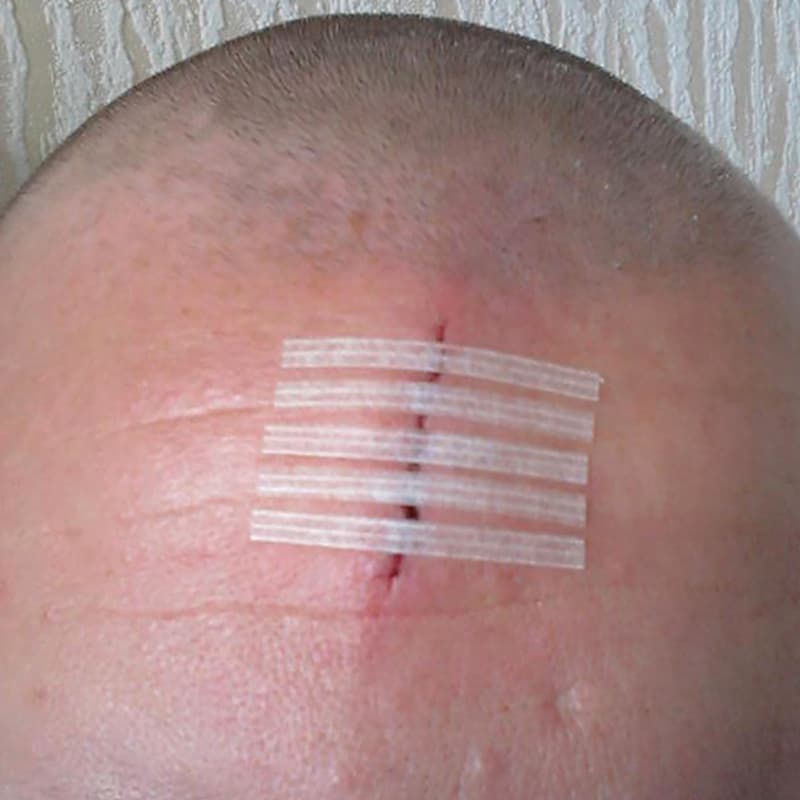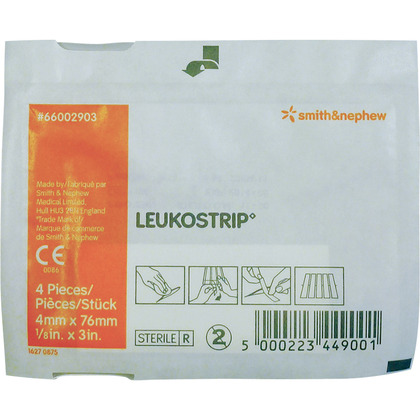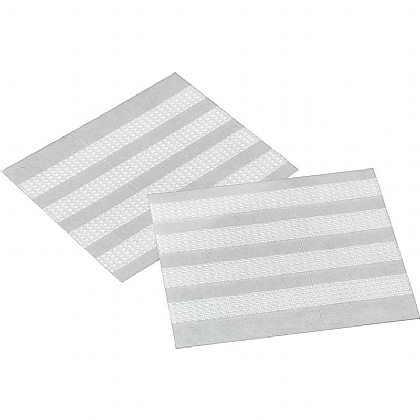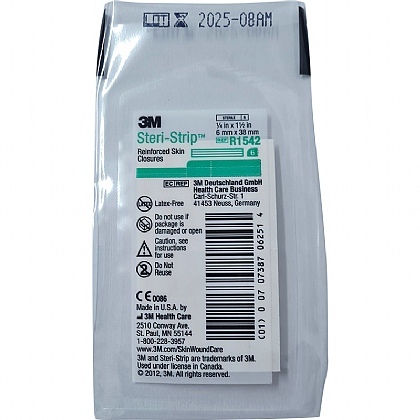
Wound closure strips (sometimes called Steri-Strips) are small adhesive bandages used by medical professionals to close small wounds – usually as an alternative or backup to stitches. You can purchase wound closure strips for personal use at the pharmacy or from most first aid retailers.
While wound closure strips can be an effective tool for helping minor cuts to heal, it’s important to always seek medical treatment for serious injuries rather than attempting to treat them yourself.
What are Steri-Strips/wound closure strips used for?
 Wound closure strips are most commonly used on small, straight cuts. Like stitches, they help to seal the wound together and aid the healing process. Compared to stitches, they are less painful to apply (they don’t need to be sewn into the skin), reduce scarring, and are easier to remove when the wound heals.
Wound closure strips are most commonly used on small, straight cuts. Like stitches, they help to seal the wound together and aid the healing process. Compared to stitches, they are less painful to apply (they don’t need to be sewn into the skin), reduce scarring, and are easier to remove when the wound heals.Wound closure strips are best suited for wounds that fit the following criteria:
- Aren’t excessively bleeding: Apply pressure to the wound for at least 5 minutes using a sterile bandage, dressing or cloth. If the wound continues to bleed after 5 minutes, don’t apply a wound closure strip – seek further medical advice as soon as possible.
- Less than half-an-inch in length: Wound closure strips are most effective on wounds that are half-an-inch or less in length.
- Don’t have jagged edges: Wound closure strips work best for surface wounds with smooth, straight edges.
Where on the body do Steri-Strips/wound closure strips work best?
Wound closure strips work best in body areas where the skin doesn’t move a lot. Joints and other body parts that frequently move may cause strips to lose their adhesion.How to apply Steri-Strips/wound closure strips
1. Clean your hands
Before touching a wound for any reason, you should always ensure that your hands are thoroughly cleaned to prevent infection. Wash your hands for a minimum of 20 seconds with warm water and hand soap. If you have disposable gloves available, use them.2. Clean the wound
It’s important to clean any dirt or contaminants from a wound before dressing it. Rinse the wound under running tap water for 5 to 10 minutes, until it’s clear of all dirt and debris. You can also use an alcohol-free wipe to gently wipe the skin but ensure you don’t use antiseptic as that may damage it.3. Dry the skin
Wound closure strips work best on dry skin, so gently pat the wound dry with a clean towel or pad of tissues. Make sure you don’t use a cotton wool ball or any other fluffy material, as this can cause strands to get stuck to the wound.4. Hold the wound closed
To ensure the closure strips hold your wound properly, gently push the sides of the wound together with your fingers before applying them. Make sure you’re holding the wound in a position that feels comfortable.5. Place the closure strips over the injury
Gently remove a strip from its packaging with clean or gloved hands. Place the sticky ends of the strip on either side of the injury in a way that holds the wound together. Repeat this for as many strips as the wound needs (each strip should be about 3mm away from the previous).6. Secure the closure strips in place
If you deem it necessary, you can secure the strips in place by putting a bandage parallel to the strips on either side of the wound, holding their sticky ends down.Caring for Steri-strips/wound closure strips
Once you’ve applied your wound closure strips, it's important to take continuous care of them to ensure they stay in place and properly help your wound to heal.Do's and Don'ts to ensure your strips stay in place
- DO keep the wound and surrounding skin clean and dry as much as possible (ensure the area is kept completely dry for at least 24 hours)
- DO frequently inspect the wound to ensure there are no signs of infection or excessive bleeding
- DO use scissors to cut any loose edges from the strips. This is to prevent loose edges from getting caught, causing the strips to come unstuck
- DON’T pick at, scratch, or pull on the ends of the strips. This could cause the strips to come undone and the wound to reopen
- DON’T rub or scratch the wound or any scabs that may form. This increases the likelihood of infection and could cause the wound to open again
- DON’T get the area wet, as this will cause the strips to fall off
How often should you reapply Steri-stips/wound closure strips?
If your wound closure strips were applied by a doctor or surgeon, do not remove or reapply any of the strips by yourself – they will fall off on their own when they’re ready. If you accidently remove a strip or get one too wet, contact your doctor.If you’ve applied the strips yourself, try to properly care for them until they fall off themselves or your wound fully heals. If they become too wet or fall off at any time before your wound is healed, follow the above instructions again to reapply new strips.
Should you remove Steri-Strips/wound closure strips?
In most cases, wound closure strips will fall off on their own and don’t require removal.If you’ve applied your own strips and can see that your wound is fully healed, you can follow these steps to remove the strips yourself.
How to remove:
1. Wet the strips with water
Apply a wet washcloth to the wound closure strips and hold it in place until the strips are soaked. If water alone doesn’t loosen the adhesive on the strips, try soaking the washcloth in a solution of equal parts water and hydrogen peroxide.2. Gently remove the strips
The adhesive on wound closure strips is designed to be very strong but should loosen over time, especially when wet. Take care and remove each strip gently one-by-one. If a strip doesn’t come off easily, repeat step one.3. Clean the area afterward
Gently wash the newly exposed skin with soap and warm water. Pat the area dry with a soft, clean towel.When should you seek medical attention?
Don’t apply wound closure strips yourself and seek medical attention if:- Your injury was caused by a dirty or rusty object
- Your wound is too large or deep to be properly covered by a wound closure strip
- You’re in a lot of pain
- Your wound is filled with dirt or debris you’re unable to safely remove yourself
- Your injury won’t stop bleeding after 10 minutes of applying pressure
- The wound becomes swollen, red or is protruding pus – this could mean your wound is infected
- The wound won’t stop bleeding
- Pain increases over time
Our wound closure range
Wound closure strips can function as an effective alternative to stitches for a straight cut that isn’t too large or deep. It’s important, however, that they are applied and removed properly, which is why it’s a job usually done by a medical professional. Our high-quality wound closure strips come in a variety of sizes and configurations to ensure effective healing for incisions and cuts.
Always keep an eye on any wound for continuous bleeding or signs of infection. Seek medical advice for any excessively painful or large injuries.
Read our other blogs for more information on first aid or contact us for further advice and information on our products.
About the author:
Jo Stokes is a writer, marketer and trained first aider at First Aid Online.
Find out more about Jo.
By Jo Stokes




